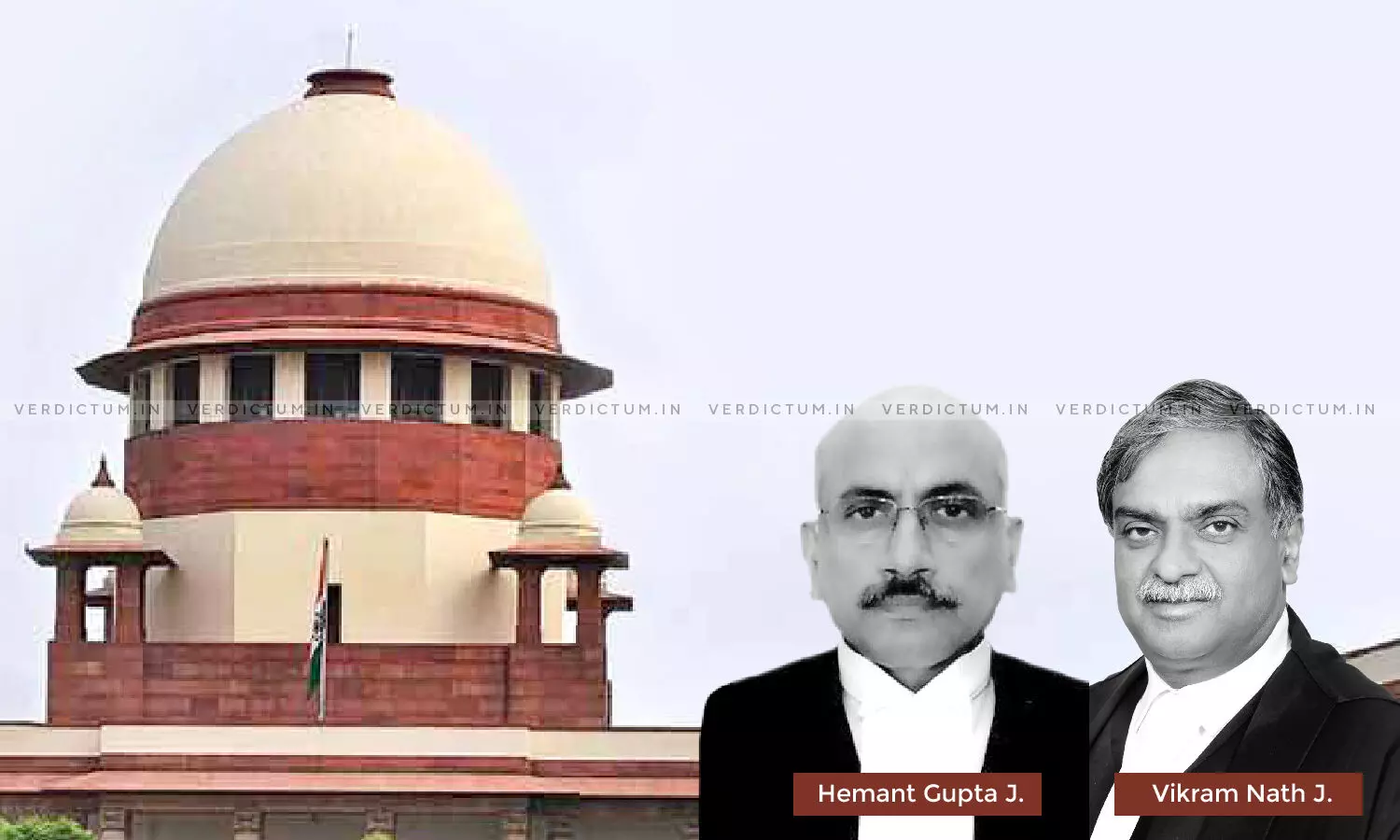
Land Acquisition| Entire Process Of Determining Market Value Based On Surmises And Conjectures - SC Modifies Compensation
 |
|A Supreme Court Bench of Justice Hemant Gupta and Justice Vikram Nath heard a land acquisition case that was based on two appeals that arose from a 2017 judgment, and the appeals were taken up for decision together.
The Court while modifying the compensation awarded to the Company (Sagar Maize Products Ltd.) observed, "We have heard learned counsel for the parties and find the entire process of determination of the market value is based upon surmises and conjectures."
In this case, one appeal was filed by the Union of India to reduce the amount of compensation from Rs.19 per square feet and also challenging the grant of compensation for the entire land owned by the Company. The other appeal was preferred by the Company claiming enhancement of compensation of the acquired land to Rs.40/- per square feet.
Counsel Amrish Kumar appeared on behalf of the Union of India.
In 1990, some land owned by the Company was acquired for building a railway line. In 1992, the Land Acquisition Collector passed an award awarding Rs.5/- per square feet as the market value of the land acquired.
Aggrieved by the determination of the market value of the land acquired, the land owners including the Company sought reference under Section 18 of the Act. The Reference Court awarded a compensation of Rs.40/- per square feet for the land acquired and also for the entire remaining land of the Company on the ground that the unacquired land cannot be utilized for the purpose intended to be used by the Company.
The Company assailed the order of Reference Court before the High Court. The High Court – on the basis of statements made by some witnesses – affirmed the finding of the Reference Court that the entire land cannot be utilized by the Company but reduced the amount of compensation to Rs.19/- per square feet.
The Supreme Court opined that 15 meters on both sides of the railway track would be subject to award of compensation at Rs. 19/- per square feet. To do so, the Bench placed reliance on the Indian Railways Way and Works Manual. In that context, the Supreme Court said that "since the land was purchased by the Company for the purpose of setting up of an industrial unit, therefore land to the extent of 30 meters on both sides cannot be put to effective use by the Company. Therefore, we deem it appropriate to grant compensation to the Company for the land on both sides of railway track to the extent of 30 meters from middle of the railway track".
With regard to the quantum of compensation, the Supreme Court relied on the case of Lal Chand v. Union of India & Anr, and found that the entire process of determination of the market value by the Reference Court was contrary to the established principles of determination of the market value of the acquired land.
Opining about the method used by the High Court for the determination of market value, the Supreme Court said that "Though we are unable to agree with the reasoning, but in the absence of any other alternative to determine market value, we do not wish to interfere with the market value assessed by the High Court."
In response to the Company's prayer for the entire land, the Supreme Court opined that "One cannot understand that how such large chunk of land can be said to be unsuitable for any industry or any evidence suggesting that industry could not be set up in such large piece of land abutting road. The Company has not produced any drawings to say that their factory cannot be put up in the remaining compact land measuring more than 130000 square feet. Therefore, compensation for the entire land owned by the Company is wholly unwarranted, illegal and unduly advantageous to the Company."
To deal with the amount of compensation, the Court referred to Section 23 of the Land Acquisition Act which specifies the factors to determine the amount of compensation to be awarded for the land acquired. The Court found that the Government was justified in not acquiring the land on the western side, and therefore, the claim of compensation of such land was unreasonable or excessive. With regard to the eastern side of the track, the Court opined that "On account of the fact that the Company can approach the land on the eastern side by taking a detour, the Company will incur an additional cost, therefore, the Company is entitled to such additional cost."
In that context, the Court ordered that after leaving land up to the extent of 30 meters from the center of railway track, the Company shall be entitled to Rs.9.5 per square feet, i.e., 50% of the compensation acquired for the railway track. Further, the Court ordered that the Company shall be entitled to Rs.9.5 per square feet in respect of land situated on the eastern side after leaving 30 meters of the buffer zone but without any benefits under Section 23(1-A) and Section 23(2) of the Act. Furthermore, the Court reiterated that for the land after the extent of 30 meters on the western side of the railway track no compensation would be payable.
Accordingly, the Supreme Court dismissed the appeals.
Cause Title - Union of India v. Ramchandra & Ors.
Click here to read/download the Judgment